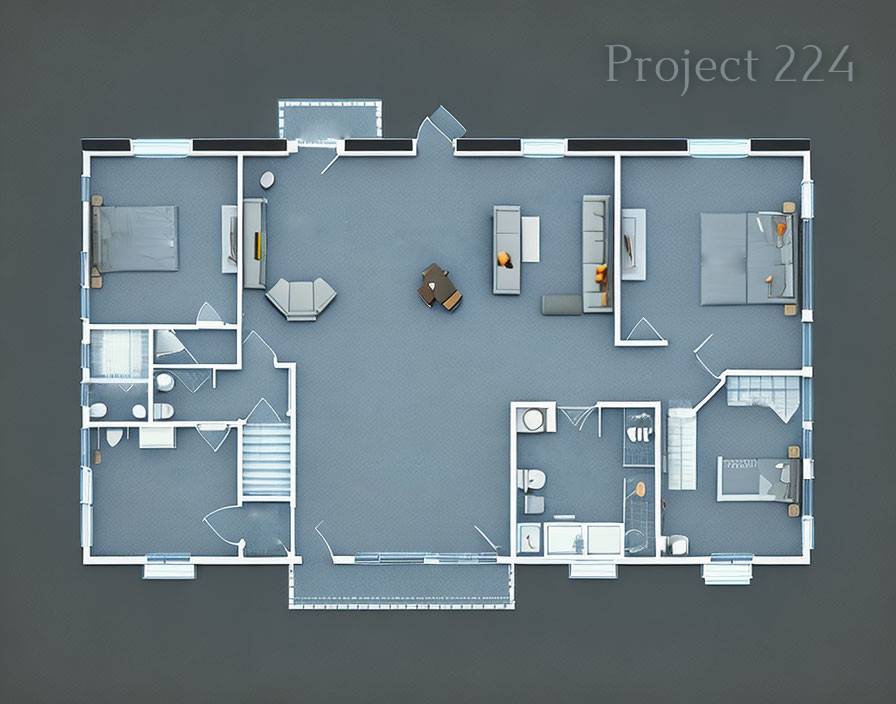Is Job Costing the Same as Estimating?
No, estimating and job cost accounting are two different things. Estimating is the process of calculating construction costs before a job starts. Job Costing is the process of accounting for the actual costs during construction.
Job costing and estimating work together like primer and paint. Estimating is the step you take so that job costing can happen more effectively.
Estimating
In construction work, estimating is the process of calculating the approximate costs of a project. This can be difficult work because one must consider labor, materials, equipment, gasoline, etc. There are countless costs associated with each job, and so estimating is critical. If it's done right, the job will be profitable. If it's wrong, the company might end up spending more on a job than they make.

Here's the basic process of cost estimating:
Scope Analysis: The first step is taking a look over the project's blueprints and plans. This helps the estimator know what types of costs will need to be tracked.
Takeoff: This is where the estimator actually estimates the amount of labor, materials, equipment time, etc. needed to complete a project. If a home is being built, the estimator will need to measure each room to determine how much flooring, drywall, and paint is necessary. If an excavation company is doing a job, the estimator will need to know how big the hole is going to be in order to determine how long it will take. This step is where the rubber meets the road.
Each item involved, such as electrical, drywall, etc. has its own construction cost code. These codes are numbers that keep track of all the cost details. They make it easier to track each item in the accounting system. They also make it easier to run reports throughout the project.
Pricing: Once the quantity for each item is determined, pricing must be applied. For example, when its determined that 800 square feet of carpet will be needed, we need to know how much that will actually cost. This will be really important not only to determine what to charge the client, but also to track the effect of any changes that take place.
Material prices are derived from a database, like the RSMeans data from Gordian.
Labor: The total amount of work for each task in the job must be estimated. Different employees have different pay rates, and those must be used in the calculation of total labor costs.
Data regarding wages can be found at the Bureau of Labor Statistics.
Subcontractors: A home builder might not do all the work in-house. They might be excellent at framing and drywall, but not really do much flooring. In those cases, they bring in a subcontractor. Those subcontractors need to be paid by the main contractor, so those costs have to be considered when creating a quote for the client.
This part can take some time, because the contractor may not have a preferred partner yet. This means they'll need to allow several subcontractors to submit bids in order to choose the one they think is the best fit.
Overhead: There are costs that are directly associated with a job, like nails. Then there are costs that are indirectly needed, like paying the power bill for the company's office, insurance, and other administrative fees. This is called overhead, and a portion of that needs to be considered in each job. It's part of keeping the business alive.
Profit: Once all of the expenses can be added up, you'll have an estimate for the total potential cost of the job. However, this isn't the bid that you give to the client, otherwise you just break even. You need to build in profit. That is the point of being in business, after all.
Contingency: It's also good to leave yourself a little wiggle room, so to speak. If you end up adding another week of work to the job, that's going to come right out of your profit. An estimator needs to build in a little cushion for unforeseen expenses. This way, there is still profit left at the end of the job if there is a change in plans. If that cushion isn't needed, then it becomes profit. Yay.
Submitting the Final Estimate: All these costs needs to be outlined and compiled for review by the project owner. They can choose to accept or reject your bid.

A good estimator is invaluable. Bad estimates can sink a company, and good ones can make it thrive. Experience is critical, because industry conditions, market conditions, labor conditions, and countless other factors can make construction costs fluctuate. An experienced estimator can keep up with all the changes and make your bids accurate.
Estimating software is critical for managing the immense amounts of data. Procore is a popular choice for the industry.
Job Costing
Once a client accepts the company's bid, the company prepares to do the work. The accountant will need to build a project budget using the estimate that was just prepared.
When a job is underway expenses are recorded. These expenses are separated by job. That's what makes it "job cost" accounting. These expenses can now be compared to the budget that you laid out before starting the project. This will help you see if you're on track to make a profit or if you're going to run into cost concerns.
Keeping close track of data is critical. A solid job costing software, like A-Systems JobView, will get the job done right.
Full Circle
Cost estimates are not just guesses. Materials costs can be gathered from suppliers, but labor cost estimates come from historical data gathered from past jobs.
The whole process goes in a circle. Estimates are made based off of job costing data. Those estimates are used to make a budget for job costing. It's a cycle.
